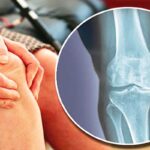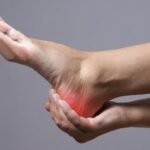
Knee ligament injuries can be painful and debilitating, affecting individuals of all ages and activity levels. The knee joint is stabilized by several ligaments, and injuries to these structures can range from mild sprains to severe tears. Properly diagnosing a knee ligament injury is crucial for effective treatment and rehabilitation. In this comprehensive guide, we will explore the key steps and tests used to assess and diagnose knee ligament injuries.
Understanding Knee Ligament Injuries
Before diving into the diagnostic process, it’s essential to grasp the significance of knee ligaments and the types of injuries that can occur:
- Anterior Cruciate Ligament (ACL): The ACL provides stability to the knee joint, preventing excessive forward movement of the tibia (shin bone) in relation to the femur (thigh bone). ACL injuries are common in sports and can range from sprains to complete tears.
- Posterior Cruciate Ligament (PCL): The PCL functions as the counterpart to the ACL, preventing excessive backward movement of the tibia. PCL injuries are less common but can still occur in accidents or sports.
- Medial Collateral Ligament (MCL): The MCL runs along the inner part of the knee, preventing the knee from buckling inward. MCL injuries are often caused by direct blows to the outer knee or excessive twisting.
- Lateral Collateral Ligament (LCL): The LCL runs along the outer part of the knee, preventing the knee from buckling outward. LCL injuries are less common and typically result from blows to the inner knee.
Common Causes of Knee Ligament Injuries
Knee ligament injuries can occur due to various factors, including:
- Sports: High-impact sports and activities, such as football, soccer, basketball, and skiing, are common settings for knee ligament injuries.
- Accidents: Car accidents, falls, and other traumas can lead to knee ligament injuries.
- Sudden Twists: Sudden, forceful twisting of the knee can damage ligaments.
- Overexertion: Overuse or excessive strain on the knee can lead to ligament injuries.
Signs and Symptoms of Knee Ligament Injuries
Knee ligament injuries can present with various signs and symptoms, including:
- Pain: Pain and tenderness around the knee are common, and the severity can vary.
- Swelling: Swelling typically occurs within hours of the injury and may be extensive.
- Instability: A feeling of the knee giving way or feeling unstable is common.
- Limited Range of Motion: Difficulty in bending or straightening the knee may be experienced.
- Audible Pop: Some individuals report hearing a “pop” at the time of injury.
- Bruising: Bruising may develop in the days following the injury.
Diagnostic Process for Knee Ligament Injuries
Properly diagnosing a knee ligament injury requires a comprehensive assessment by a healthcare provider. Here are the key steps in the diagnostic process:
- Medical History: The healthcare provider will begin by taking a detailed medical history, including the circumstances surrounding the injury and any pre-existing knee conditions.
- Physical Examination: A thorough physical examination of the knee will be performed. The provider will assess for tenderness, swelling, range of motion, and signs of instability.
- Imaging Studies: In many cases, imaging studies are necessary to confirm the diagnosis and assess the extent of the injury. Common imaging tests include X-rays and magnetic resonance imaging (MRI). X-rays are typically performed to rule out fractures, while an MRI can provide detailed images of ligaments and soft tissues.
- Stress Tests: Stress tests are a key component of diagnosing ligament injuries, particularly the ACL and PCL. These tests involve applying controlled force to the knee while assessing for abnormal movement or laxity.
- Lachman Test (ACL): The Lachman test is a common clinical exam used to assess the integrity of the ACL. It involves bending the knee at a 20-30-degree angle and applying an anterior force to the tibia. An ACL injury will result in increased forward tibial movement.
- Pivot Shift Test (ACL): The pivot shift test assesses the function of the ACL by evaluating the rotation of the tibia. A positive test indicates ACL deficiency.
- Drawer Test (PCL): The drawer test evaluates the integrity of the PCL by assessing posterior tibial movement.
- Valgus and Varus Stress Tests (MCL and LCL): Valgus stress tests assess the MCL, while varus stress tests assess the LCL. These tests involve applying lateral or medial force to the knee to assess ligament integrity.
- Grading the Injury: Based on the diagnostic findings, knee ligament injuries are typically graded from I to III, with Grade I representing a mild sprain and Grade III indicating a complete tear. Treatment options and recommendations depend on the severity of the injury.
Treatment for Knee Ligament Injuries
The treatment approach for knee ligament injuries can vary based on the specific ligament involved and the extent of the injury. Common treatment options include:
- Rest, Ice, Compression, and Elevation (RICE): This approach can help reduce initial pain and swelling.
- Physical Therapy: Physical therapy is often recommended to strengthen the surrounding muscles and improve knee stability.
- Bracing and Taping: The use of knee braces or taping techniques can provide additional support.
- Medications: Nonsteroidal anti-inflammatory drugs (NSAIDs) may be prescribed to manage pain and inflammation.
- Corticosteroid Injections: In some cases, corticosteroid injections may be recommended to reduce inflammation.
- Surgery: Severe ligament injuries, especially complete tears, may require surgical repair or reconstruction.
It’s essential to consult with a healthcare provider for a proper diagnosis and individualized treatment plan for knee ligament injuries. Early and appropriate care can help individuals recover and regain full function of their knees.




